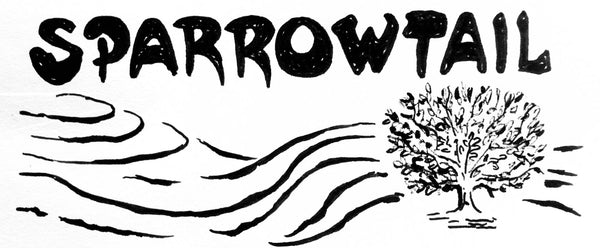Drinking tea iced is how many, if not most of us, drink tea in the warmer months in North America.
There are many methods for preparing tea to serve chilled, and today I want to talk a bit about two of them: cold-brewing, and what I'll call hybrid cold-brewing.
Cold brewing is very simple. We can simply put the tea into cold or room-temperature water and then put it in the refrigerator for 8-12 hours (I like to go for the full 12 when I can). This is a less complicated process than brewing tea hot and then chilling it. It also makes for iced tea that is less bitter than if we had brewed it in hot water first, due to more tannins being released in hot water versus cold..
Proportions of leaf to water can vary based on what tea is used, but a general rule to follow is one gram of tea per 100 ml of water, which is a just shy of 3 1/2 fluid ounces. Good candidates for cold-brewing are most green teas, and many other teas with smaller and/or softer leaves.
My personal favorite teas to cold-brew include Bi Luo Chun, Cui Ming, Mao Feng, Dragonwell, both the green or black Laoshan teas, Zhu Ye Qing, and the Golden Bud Black tea.
Some teas with larger and/or harder leaves are best brewed in a "hybrid" method of using hot and cold water. This allows the leaves to open up a bit more so that the flavor is released more fully.
Hybrid hot/cold brewing is a bit more complicated, as there are additional steps involved and more variables come into play depending on what kind of setup you've got for tea brewing and so on, so I'll just focus on one method for now, which is the one I've been using lately.
First, you'll need a pitcher made of a type of glass that is resistant to extreme temperature variations, such as borosilicate or pyrex, and you'll also want some ice on hand, preferably ice that's made from filtered or spring water, the same kind of water you'd ideally use to hot brew tea with.
Measure out the tea and put it in the bottom of the pitcher. I use the same ratio of leaves to water for this as I would as if I were straight cold-brewing, according to the volume of the pitcher. Then, pour hot water into the pitcher, to about 1/4 full. Swirl the leaves around a bit to fully wet them, and let the tea steep for the same amount of time (or a bit less), as you would if you were brewing it to drink hot. Then, immediately put ice into the pitcher so the tea doesn't oversteep in the hot water. Feel free to use a lot of ice here. Stir until the ice all melts, and then fill the pitcher up to the top with room-temperature water. After this, you can put the pitcher into the fridge for 8-12 hours and let the leaves release what they've got.
The hybrid method is great for teas, like Dancong oolongs, that are made from large-leafed varietals and whose dried leaves have a harder texture to them. These teas also, not coincidentally, will yield more infusions when brewed hot, especially when brewing gongfu style. My experience is that these kinds of teas just take a bit more for the water to get into the core of the leaf, as it were, so the hot water really helps get things going.
That's it for now- enjoy your iced tea!!
Photos: High Mountain Organic Bi Luo Chun, before and after cold-brewing.



Great blog post! Thanks for the leaf to water ratio estimation for cold-brewing. I think I’ve been using too much leaf and the resulting cold-brewed tea turns out bitter. I’ll try 3.5 – 4g tea per 12 oz water and see if that’s any better.
Best,
Aidan